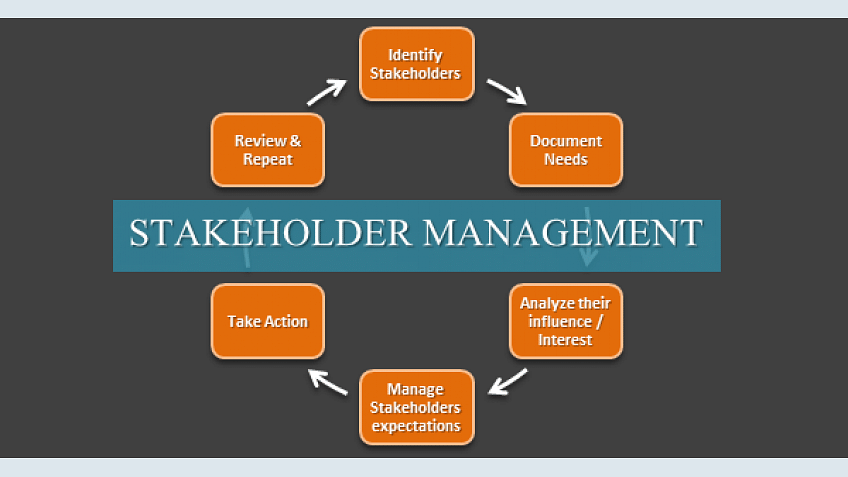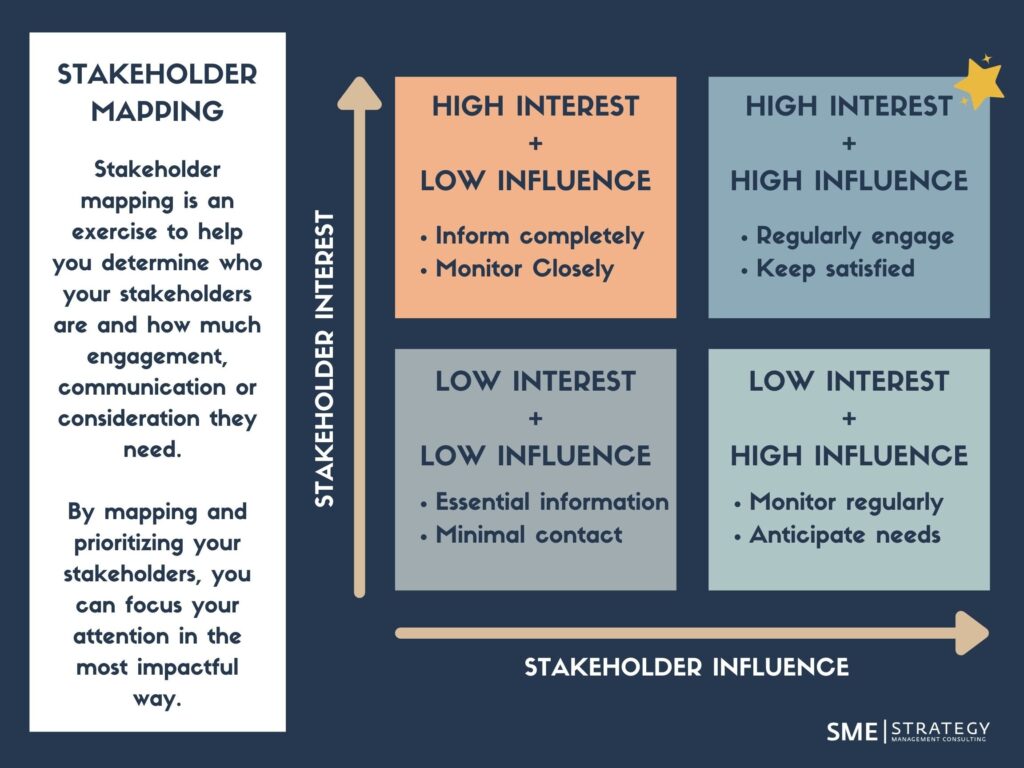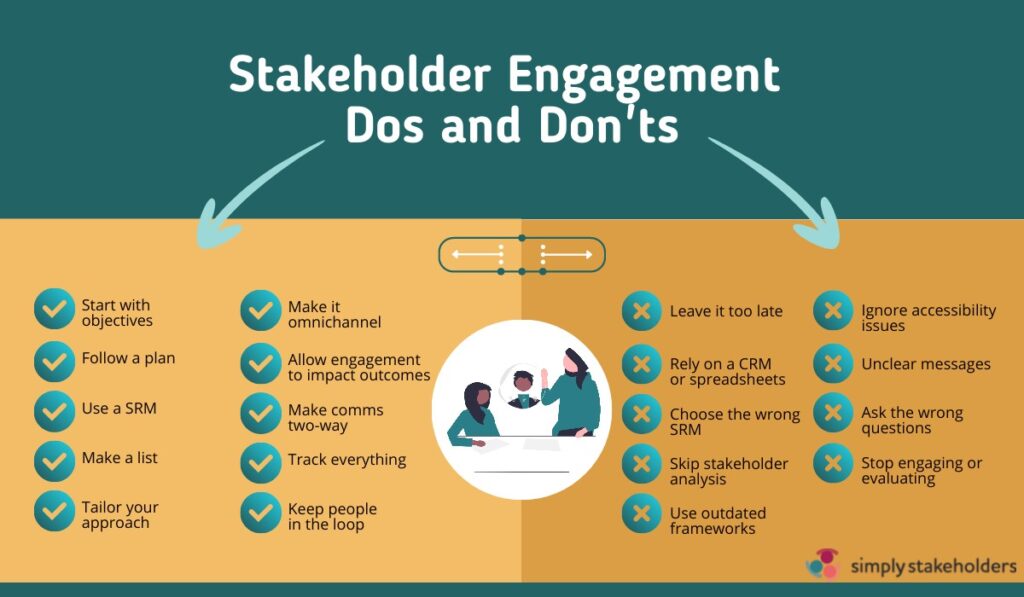
Managing Stakeholder Expectations
Managing Stakeholder Expectations
In today’s fast-paced and ever-changing business environment, managing stakeholder expectations has become crucial for the success of any project. As a project manager, it is essential to understand that stakeholders play a vital role in the project and can greatly influence its outcome. In this article, we will explore effective strategies for managing project stakeholder expectations, providing you with the tools and insights to ensure smooth project execution and stakeholder satisfaction. Whether you are an experienced project manager or just starting in the field, these strategies will help you navigate the complex landscape of stakeholder management, enhancing communication, and fostering collaborative relationships. So, let’s dive in and discover the secrets to successfully managing project stakeholder expectations.
Speak to MCTC today about our consultancy advice and training packages.
Effective Strategies for Managing Stakeholder Expectations
Managing stakeholder expectations is essential for the success of any project. When stakeholders have unrealistic expectations or feel neglected, it can lead to frustration, conflict, and ultimately, project failure. To ensure a smooth project journey, it is crucial to employ effective strategies for managing stakeholder expectations. This article will explore various strategies that can help you effectively manage project stakeholder expectations and improve the overall project outcomes.
1. Communication
Clear and consistent communication is the foundation for managing stakeholder expectations. Regular updates and progress reports keep stakeholders informed about the project’s status and help manage their expectations effectively.
1.1 Regular updates and progress reports
Providing regular updates and progress reports helps stakeholders stay informed and engaged throughout the project. These updates should highlight the achievements, challenges, and upcoming milestones in a clear and concise manner. By keeping stakeholders in the loop, you demonstrate transparency and foster trust.
1.2 Establishing a communication plan
Developing a robust communication plan is crucial for managing stakeholder expectations. This plan should outline the communication channels, frequency of updates, and the key messages to be communicated. By establishing expectations around communication, you can ensure that stakeholders are well-informed and adequately engaged throughout the project life cycle.
1.3 Active listening
Active listening is an essential skill for effective stakeholder management. By actively listening to their concerns, opinions, and feedback, you can gain valuable insights and demonstrate that you value their input. Encourage stakeholders to share their thoughts and actively seek their input and suggestions.
1.4 Managing feedback and addressing concerns
Creating a mechanism to manage feedback and promptly address stakeholder concerns is essential. By acknowledging and responding to their feedback, you can demonstrate your commitment to meeting their expectations. Timely resolution of issues and concerns also helps minimise the impact on project progress and stakeholder satisfaction.
1.5 Managing difficult stakeholders
Inevitably, projects encounter difficult stakeholders who may be resistant to change or hold conflicting interests. It is essential to adopt strategies for managing difficult stakeholders, such as effective persuasion, conflict resolution techniques, and building rapport. By understanding their concerns and finding common ground, you can turn difficult stakeholders into valuable project partners.
2. Stakeholder Analysis
Conducting a comprehensive stakeholder analysis is crucial for managing stakeholder expectations effectively. This analysis helps identify the key project stakeholders, assess their interests and influence, and map out their relationships within the project context.
2.1 Identifying key project stakeholders
Identifying the key project stakeholders is the first step in managing their expectations. These stakeholders are the individuals or groups who have a significant influence or interest in the project’s outcome. By identifying and prioritising these stakeholders, you can allocate resources and attention accordingly.
2.2 Assessing stakeholder interests and influence
Understanding the interests and influence of stakeholders is essential for managing their expectations effectively. By conducting a thorough analysis, you can identify their goals, motivations, and potential barriers to their support. This knowledge enables you to tailor your communication and engagement strategies to align with their expectations.
2.3 Mapping stakeholder relationships
Mapping stakeholder relationships helps visualise the interactions and dependencies among stakeholders. Understanding these relationships allows you to identify potential conflicts, dependencies, and collaboration opportunities. This broader perspective helps in managing stakeholder expectations by facilitating effective coordination and collaboration.

3. Set Clear Project Objectives and Scope
Clear project objectives and scope are crucial for managing stakeholder expectations right from the start. By defining the project goals, objectives, and limitations, you establish a shared understanding among stakeholders and align their expectations accordingly.
3.1 Defining project goals and objectives
Clearly defining the project goals and objectives helps set realistic expectations among stakeholders. This clarity ensures that all parties are working towards a common purpose and understand the desired outcomes. The project goals and objectives should be SMART (Specific, Measurable, Achievable, Relevant, and Time-Bound) to provide a clear direction for all stakeholders.
3.2 Defining the project scope and limitations
Defining the project scope and limitations involves specifying what is included and excluded from the project. This clarity prevents misunderstandings and helps manage stakeholders’ expectations regarding the project’s deliverables and boundaries. Clearly communicate the project’s scope to avoid scope creep and ensure that stakeholders have a realistic understanding of what can be achieved within the project’s constraints.
3.3 Ensuring alignment with stakeholder expectations
Regularly reviewing and aligning project objectives and scope with stakeholder expectations is crucial. As projects evolve, stakeholders’ expectations may change or evolve, and it is essential to ensure ongoing alignment. Establish channels for stakeholders to provide input on objectives and scope and incorporate their feedback into the project planning process.
4. Managing Expectations through Transparency
Transparency is a vital strategy for managing stakeholder expectations effectively. By fostering openness and providing visibility into project planning, decision-making, and progress, you can build trust and ensure that stakeholders have realistic expectations.
4.1 Transparent project planning and decision-making
Involving stakeholders in the project planning and decision-making processes promotes transparency and inclusivity. Share project plans, timelines, and decision criteria to provide stakeholders with insights into the rationale behind key decisions. By involving them early on, you can address any misaligned expectations and ensure their buy-in and support.
4.2 Establishing realistic timelines and milestones
Setting realistic timelines and milestones is essential for managing stakeholder expectations regarding project progress. Over promising and under delivering can lead to dissatisfaction and erode stakeholder trust. By accurately estimating project duration and establishing achievable milestones, you can effectively manage stakeholder expectations and build credibility.
4.3 Managing scope creep
Scope creep refers to the uncontrolled expansion of project scope beyond the agreed-upon boundaries. By proactively managing scope and clearly communicating any proposed changes to stakeholders, you can prevent unrealistic expectations and maintain project focus. Establish a change control process that involves stakeholder input and ensures that any scope changes align with project objectives and priorities.
4.4 Clarifying resource constraints
Project resources, such as budget, personnel, and equipment, are often limited. Clearly communicating these resource constraints helps manage stakeholder expectations regarding the project’s capacity to meet their requirements and demands. By explaining the rationale behind resource allocations, stakeholders can understand the trade-offs involved and adjust their expectations accordingly.

5. Change Management
Change is a constant in projects, and effectively managing it is essential for managing stakeholder expectations. By anticipating and addressing resistance to change, involving stakeholders in the change process, and communicating the benefits of change, you can help stakeholders navigate the journey more effectively.
5.1 Anticipating and managing resistance to change
Change often triggers resistance from stakeholders who may be comfortable with the status quo or fear the unknown. Anticipating potential resistance and proactively addressing it enables you to manage stakeholder expectations during periods of change. By understanding their concerns and working with them to address any fears or uncertainties, you can gain their support and minimise conflict.
5.2 Involving stakeholders in the change process
Including stakeholders in the change process fosters a sense of ownership and enables them to contribute their insights and expertise. By involving them in decision-making, change planning, and implementation efforts, you can ensure that their expectations are considered and integrated into the change management strategy. This involvement also helps manage resistance and increase the likelihood of successful change adoption.
5.3 Communicating the benefits of change
Effectively communicating the benefits of change is crucial for managing stakeholders’ expectations and gaining their support. Highlight how the proposed changes align with their goals, contribute to organisational success, and address their pain points. By emphasising the positive outcomes and addressing any concerns, you can help stakeholders perceive change as an opportunity rather than a threat.
6. Risk Management
Managing risks is an integral part of project management and plays a significant role in managing stakeholder expectations. By identifying potential risks, proactively planning for their mitigation, and effectively managing stakeholder concerns related to risks, you can build confidence and trust among stakeholders.
6.1 Identifying potential risks and uncertainties
Conduct a thorough risk assessment to identify potential risks and uncertainties that may impact the project and stakeholder expectations. Consider both internal and external factors that could affect project success. By anticipating these risks, you can develop contingency plans and communicate them to stakeholders for their awareness and understanding.
6.2 Mitigating risks through proactive planning
Proactively planning for risk mitigation helps manage stakeholder expectations regarding potential challenges and failures. Develop risk mitigation strategies and clearly communicate them to stakeholders. Establish a risk management plan that includes regular monitoring and reassessment of risks to ensure the appropriate actions are taken. By actively managing risks, you can instil confidence and manage stakeholder expectations effectively.
6.3 Managing stakeholder concerns related to risks
Stakeholders may express concerns or reservations regarding project risks. It is essential to address these concerns promptly and transparently. Provide regular updates on risk mitigation efforts and any changes to risk levels or plans. Engage stakeholders in risk discussions and seek their input and collaboration in developing risk response strategies. By actively managing stakeholder concerns related to risks, you can demonstrate your commitment to their welfare and the project’s success.

7. Conflict Resolution
Conflicts are inevitable in projects and can impact stakeholder expectations significantly. By identifying and addressing conflicts, facilitating open dialogues and negotiations, and seeking win-win solutions, you can manage conflicts effectively and maintain productive stakeholder relationships.
7.1 Identifying and addressing conflicts
Encourage open communication among stakeholders and proactively address conflicts as soon as they arise. Conflict resolution techniques, such as active listening, mediation, and negotiation, can help manage conflicts constructively. By identifying the root causes of conflicts and addressing them promptly, you can prevent conflicts from escalating and manage stakeholder expectations more effectively.
7.2 Facilitating open dialogues and negotiations
Creating a safe and inclusive environment for open dialogues and negotiations enables stakeholders to express their perspectives and seek mutually beneficial outcomes. Facilitate meetings, workshops, or forums where stakeholders can communicate their concerns, explore options, and work towards solutions. By facilitating constructive dialogue, you can foster collaboration and resolve conflicts that may arise from varied stakeholder expectations.
7.3 Seeking win-win solutions
In managing stakeholder expectations, it is essential to seek win-win solutions that address the interests and needs of all parties involved. By exploring alternative approaches and considering compromise, you can achieve mutually agreeable outcomes. When stakeholders perceive that their interests are valued and respected, it fosters positive stakeholder relationships and enhances project outcomes.
8. Continual Engagement and Relationship Building
Maintaining ongoing engagement with stakeholders and building strong relationships are critical for managing stakeholder expectations throughout the project life cycle. By engaging stakeholders regularly, building trust and rapport, and seeking and incorporating their input, you can ensure their ongoing support and commitment.
8.1 Regular stakeholder engagement activities
Engaging stakeholders through regular activities, such as meetings, workshops, or briefings, allows you to keep them informed and involved in project decisions. Seek their input on project progress, challenges, and any changes that may impact their expectations. By actively engaging stakeholders, you can demonstrate your openness and commitment to collaboration.
8.2 Building trust and rapport with stakeholders
Building trust and rapport is essential for effective stakeholder management. Establish credibility by delivering on commitments, maintaining transparency, and actively listening to stakeholders’ concerns. Regularly communicate updates and progress to keep stakeholders informed and demonstrate that their interests are being addressed. By fostering trust, you can manage stakeholder expectations more effectively and build lasting relationships.
8.3 Seeking and incorporating stakeholder input
Stakeholders’ input is invaluable for managing their expectations and ensuring project success. Actively seek their feedback, ideas, and suggestions throughout the project life cycle. By incorporating their input into decision-making and leveraging their expertise, you can enhance the quality of project outcomes and align their expectations with project realities.

9. Agile Project Management
Agile project management methodologies provide a flexible and iterative approach that is highly suitable for managing stakeholder expectations. By embracing adaptability and flexibility, engaging stakeholders throughout the project life cycle, and facilitating incremental feedback and adjustments, you can effectively manage changing expectations.
9.1 Embracing adaptability and flexibility
Agile project management emphasises adaptability and flexibility to respond to changing requirements and stakeholder expectations. By adopting an agile mindset, you can embrace change as an opportunity and adapt project plans and deliverables accordingly. Regularly review and reassess stakeholder expectations to ensure alignment with evolving project circumstances.
9.2 Engaging stakeholders throughout the project life cycle
Engaging stakeholders at every stage of the project promotes collaboration, understanding, and buy-in. Regularly involve stakeholders in sprint planning, reviews, and retrospectives to gather their input and incorporate their feedback. By continuously seeking their involvement, you can ensure that their expectations are considered and managed effectively.
9.3 Facilitating incremental feedback and adjustments
Agile methodologies emphasise frequent feedback loops and incremental adjustments. By soliciting feedback from stakeholders early and often, you can ensure that their expectations are met. Regularly iterate on project deliverables and seek stakeholder validation to ensure that their evolving needs are addressed. By facilitating incremental feedback and adjustments, you can manage stakeholder expectations proactively.
10. Monitoring and Evaluation
Establishing a process for monitoring and evaluating project progress and performance is crucial for managing stakeholder expectations effectively. By establishing performance metrics and indicators, regularly tracking progress and performance, and conducting stakeholder surveys and assessments, you can gather valuable insights and continuously improve stakeholder management.
10.1 Establishing performance metrics and indicators
Define performance metrics and indicators that align with stakeholder expectations and project goals. These metrics should capture both qualitative and quantitative measures of project success. Develop Key Performance Indicators (KPIs) that allow you to track progress, outcomes, and stakeholder satisfaction effectively.
10.2 Regularly tracking progress and performance
Monitor project progress and performance regularly to ensure that it aligns with stakeholder expectations. Regularly review and assess progress against the established metrics and indicators. Share progress reports with stakeholders to keep them updated and address any gaps between expectations and actual progress promptly.
10.3 Conducting stakeholder surveys and assessments
Periodically conduct stakeholder surveys and assessments to gather feedback on their satisfaction, perceptions, and expectations. Anonymous surveys or interviews can provide valuable insights into stakeholder experiences, preferences, and concerns. Use the feedback to fine-tune your stakeholder management strategies and improve the overall project experience.
In conclusion, effectively managing project stakeholder expectations requires a multifaceted approach that encompasses communication, stakeholder analysis, clear project objectives and scope, transparency, change management, risk management, conflict resolution, continual engagement and relationship building, agile project management, and monitoring and evaluation. By employing these strategies, you can foster positive stakeholder relationships, prevent potential conflicts, and ultimately achieve project success. Remember, managing stakeholder expectations is an ongoing process that requires active listening, proactive communication, and the willingness to adapt to changing circumstances.
